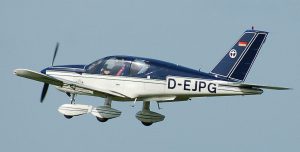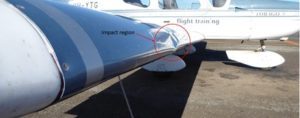
Yet another widely reported drone strike has been de-bunked, with DNA testing proving the flying object to have been a gray-headed flying fox – a bat.
A July 11 report by the pilot of a SOCATA TB-10 Tobago aircraft that he had collided with some object during final approach at Parafield Airport in South Australia was widely reported as a drone strike. The pilot himself thought first that he had hit a bird -but not finding any bird remains on the
wing after landing, concluded that the object was a drone and reported the incident as a possible drone strike.

As the drone industry knows only too well, “probably,” or “possibly” morphs quickly into “deadly drone strike” when mainstream headlines take over. But in this case, DNA evidence was used to conclusively prove the innocence of drone operators in the area.
Kudos to the Australian Transport Safety Bureau (ATSB) , who decided to swab the area around the damage on the wing of the plane, and have the swabs were tested for DNA by the Australian Museum.

Despite claims that drone and airplane collisions are a frequent problem in Australia and elsewhere, Chief Commissioner Greg Hood said “wildlife strike was the most common occurrence reported to the ATSB,” in a media report on the incident.
“Last year there was a total of 1954 incidents and accidents involving aircraft collisions with wildlife reported to the ATSB. Our research has found that bats and flying foxes, swallows and martins, kites, and lapwings and plovers are the most commonly struck type of flying animal.
“We will continue to provide information to pilots, aerodrome and airline operators, regulators, and other aviation industry participants on managing the risks associated with bird and animal strikes as part of our focus on improving transport safety.”
That being said, it is unlikely that birds – or bats – will come under the same public scrutiny that drones have any time soon.

Miriam McNabb is the Editor-in-Chief of DRONELIFE and CEO of JobForDrones, a professional drone services marketplace, and a fascinated observer of the emerging drone industry and the regulatory environment for drones. Miriam has penned over 3,000 articles focused on the commercial drone space and is an international speaker and recognized figure in the industry. Miriam has a degree from the University of Chicago and over 20 years of experience in high tech sales and marketing for new technologies.
For drone industry consulting or writing, Email Miriam.
TWITTER:@spaldingbarker
Subscribe to DroneLife here.